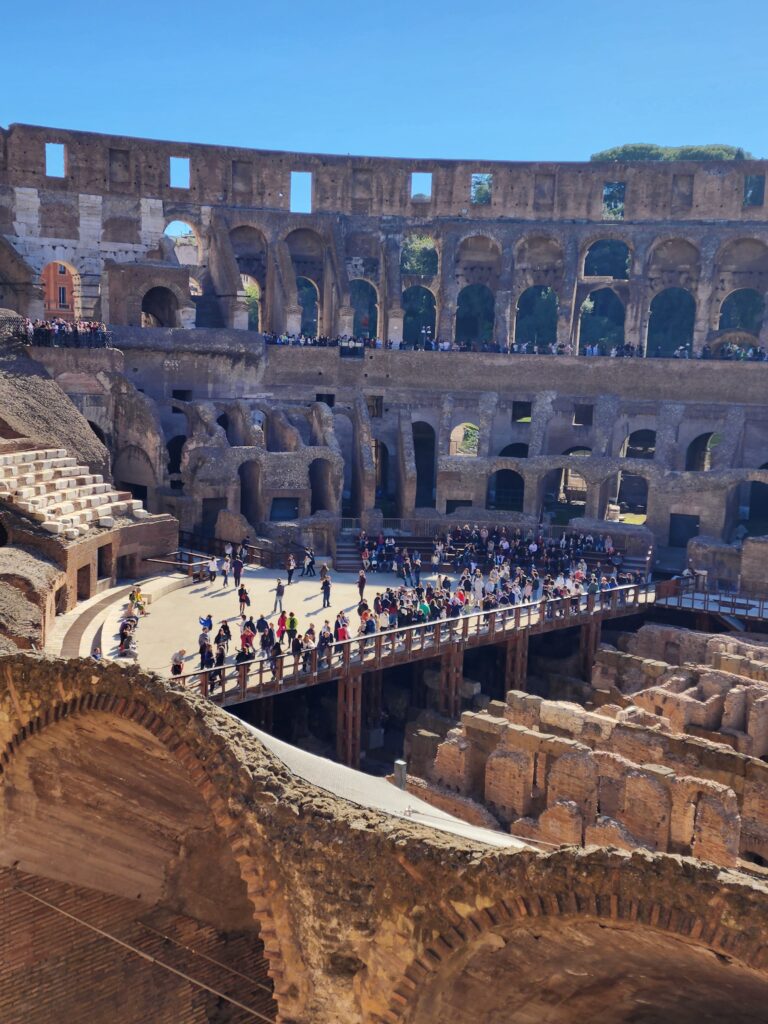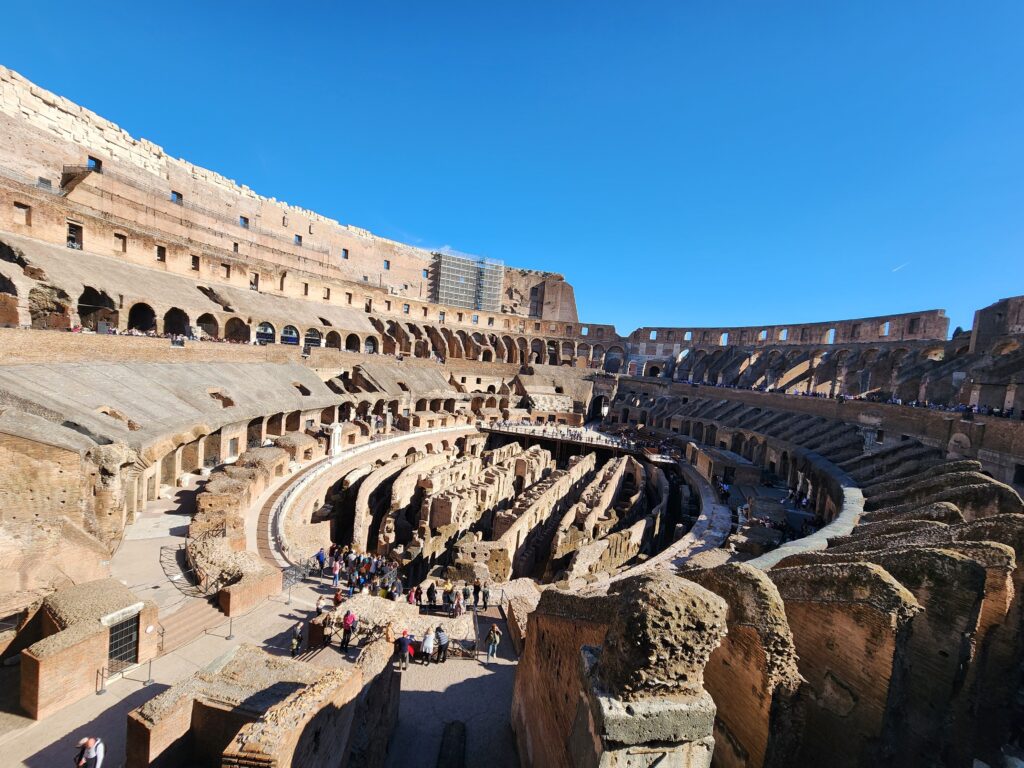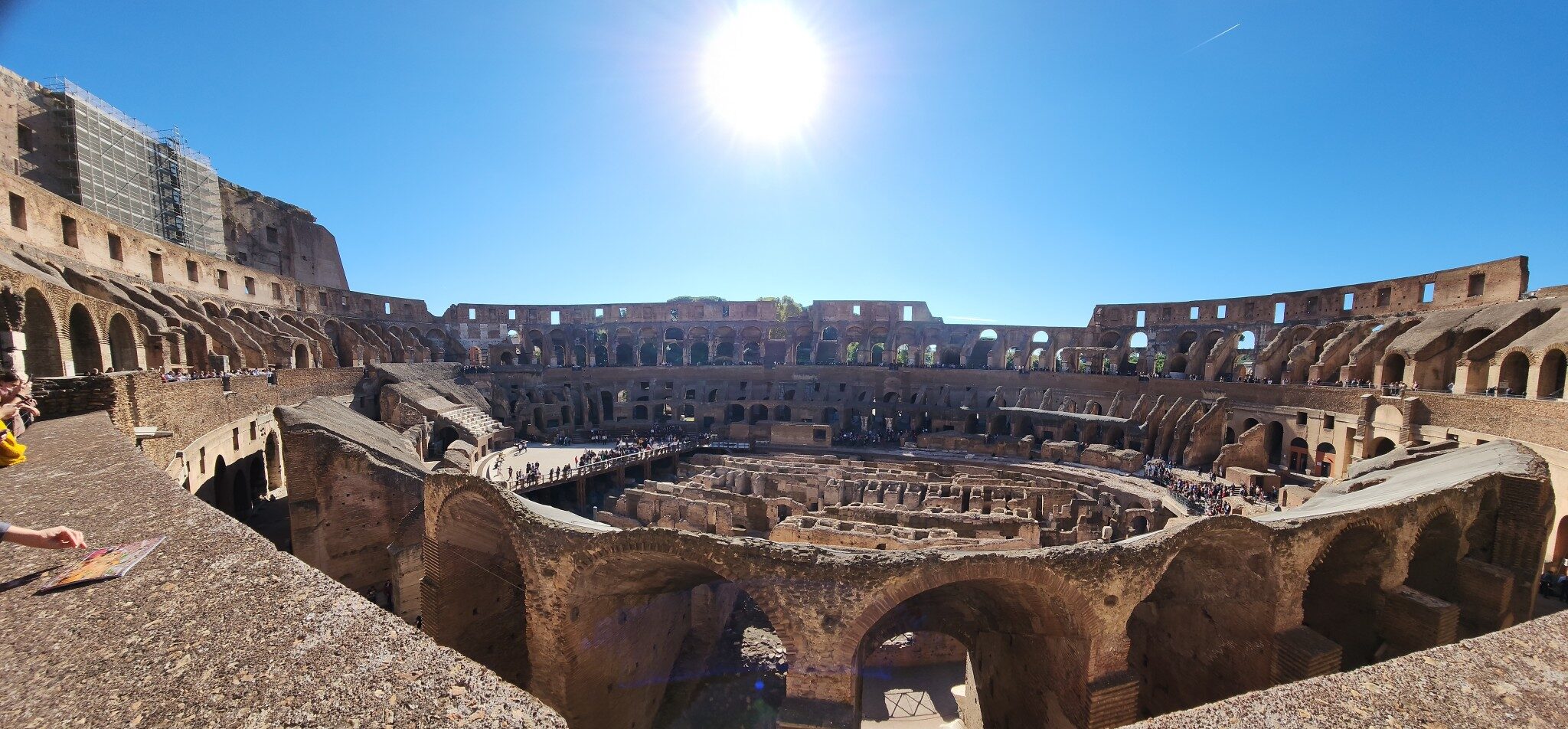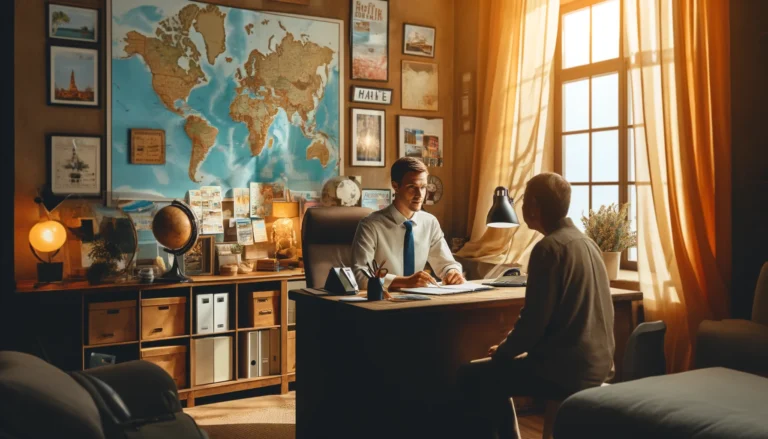Introduction
I was always intrigued by the famous quote by Saint Venerable Beded:
“Rome will exist as long as the Colosseum does; when the Coliseum falls, so will Rome; when Rome falls, so will the world.”
Nov 2022 is when I finally had the chance to cross the city of Rome off my bucket list and visit one of the seven wonders of the world, The Colosseum.
The Colosseum is arguably one of the most popular iconic and historic monuments to visit in Italy. This ancient and magnificent piece of architecture leaves visitors short of words turning back the hands of time and providing a peek into the life of the Roman gladiators and crowds of cheering spectators. A must visit for fans of the movie ‘Gladiator’ directed by Ridley Scott.
To have the nerve wrecking feel of what it must have been like to be in the crowd and watch gladiators battle it out inside the grand Amphitheater, or simply to enjoy the vibe engulfing probably the most popular monument of the world, a visit to the Colosseum is a pure, grand and unadulterated experience.
What is the Colosseum?
It is not just the stupendous exterior of this iconic structure that leaves you in awe, but the significance of this monument to the history of the Roman empire stands out. At the heart of the Roman Empire, the Colosseum was constructed for the purpose of holding prisoners, animals and gladiators.
83 meters by 48 meters in dimensions, this was a ‘larger than life’ achievement in terms of architecture and rightly so one of the most recognizable landmarks on the planet earth. The Colosseum was the largest amphitheater ever built and could hold up to spectators in excess of 80,000 at once.
Historical Dive
Emperor Vespasian commissioned the construction of the Colosseum between 70 and 72 AD. The Colosseum, also known as the ‘Flavian’ Amphitheater. It was inaugurated 8 years later by Vespasian’s son, ‘Titus. Funded by the “Great Jewish Revolt”, the structure was also built by several thousands of Jewish prisoners.
There were 100 days of deadly games as part of inauguration which involved gladiator battles and animal encounters, and such games continues for years on.
The emperor continued to construct tunnels and galleries beneath the structure of the Colosseum. There was even a church and a cemetery together with private housings.
Later on the Frangipani family modified all of that by fortifying and turning the Colosseum into a grand castle. It was in the 14th century when an earthquake caused massive destruction to the monument’s structure and the awe-inspiring landmark fell apart.
In 18th century, popes tried to re-develop the Colosseum into a religious facility, however, natural disasters struck again and knocked down most of the Colosseum. The building was only restored in the 1990s when it was decided by the government to run the Colosseum as a monument of historical attraction to preserve the history and create an opportunity for tourism.
What’s not to miss at the Colosseum?
If you do not have the time or money to enter the Colosseum (or do no fancy this historical marvel), you should at least witness this mind-blowing architectural wonder from the outside. My personal recommendation would be to enter the Colosseum. It’s definitely worth it.
Nothing else in the city of Rome can compare to taking a stroll through the magnificent Colosseum. Boasting with spectacular facades and quite an intense atmosphere (the vibe is to take note of), the inside of this structure is just as memorable as the supreme exterior. For the Colosseum, indeed Seeing is believing!

The first and the second tier is the floor on the Colosseum that was allocated for the general public in the pre-historic days. The views of the amphitheater from the 2nd floor are beautiful and will give you the feeling of battles that would have taken place in the historic times. If you are one of the historic buffs, you are going to feel the ‘chills’.

A standard ticket to the Colosseum gives visitors access to the first and the second tier. For most this is sufficient, while the enthusiasts should look for more expensive ticket options which provides you access to the ground floor, tunnels, chambers and cells, together with options for archaeologists and tour guides to make your visit even more interesting. See the next chapter for more details on Ticketing.

The belvedere includes the third, fourth, and fifth tiers. These tiers have recently been opened to visitors, providing an unobstructed view of the entire Rome city and of course the breath taking Colosseum arena.
The Arch of Constantine, which is the largest Roman arch. This is a symbol marking the famous victory by Emperor Constantin over Milvian Bridge.
Nearby is the Roman Forum, where was the epicenter of Roman politics and what is left now are only the remains of the stately columns and stonework.
Palatine Hill provides one of the best views of the Colosseum and the Roman Forum.
All about the Entry
The easiest and best way to get access to the Colosseum is to buy tickets online. This will save you from waiting in a long queue and can help you quickly access the entrance at which your printed ticket (or mobile phone copy is sufficient) needs to be scanned.
The ticket can be bought at the official website https://www.coopculture.it/en/products/ticket-colosseum-forum-and-palatine-_24h/ )
A standard ticket, with access to the first and second tier of the Colosseum, the Roman Forum and the Palatine Hill costs USD 15 per adult, free entry for children under 17 years old and seniors above age of 65. Remember to make the free registration for children!
The ticket is valid for 48 hours. However, you can visit only one of the two attractions (the Roman Forum or the Palatine Hill) along with the Colosseum each day.
How to get to the Colosseum?
- By Metro: Just next to the arena is Colosseo, the metro station of the B line.
- By Tram: To the south of the Colosseum is the tram station known as Piazza del Colosseo. Here, you can take the tram lines number 3 and 8 to reach Colosseum.
- By Bus: You can also get to the Colosseum by any of these bus lines: 118, 117, 87, 85, 75, and 51 (from Colosso or Celio Vibenna).
- From the airport, it takes about 20 minutes to reach the Colosseum by either bus or tram.
Things to keep in mind while visiting the Colosseum
- There is going to be high security.
- Only Small handbags and backpacks are allowed in the Colosseum. Explosive items and sharp objects are not allowed. Selfie sticks are forbidden too!
- Empty plastic bottles are allowed. There’s a fountain inside the Colosseum where the bottles can be filled.
- The best time (in terms of crowd and traffic) to get into the Colosseum is after 15:00.
- Beware of pick-pocketers!
- There are plenty of stairs to climb inside the Colosseum and hence wear comfortable attire. Bring a cap for mid-day trips to cover your head from the sunshine.
- Elevators are available for people of determination / people on wheelchairs.
My final thoughts are that visiting the Colosseum is an absolute ‘must-do’ in the city of Rome, most impressive encounter that I could witness from the ancient world. This visit can easily become the highlight of your trip to Italy.

FAQ’s
How to get schengen visa in the UAE when you require visa to enter Italy?
Check my blog : https://aqificial.com/can-you-visit-all-of-europe-with-a-schengen-visa/












One Response